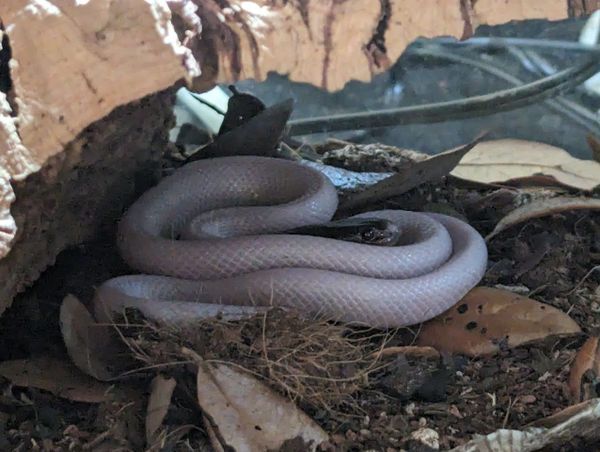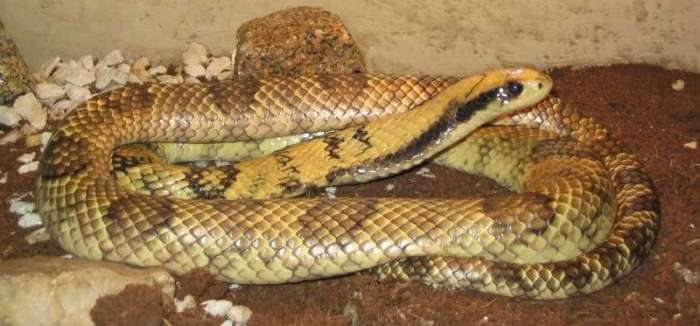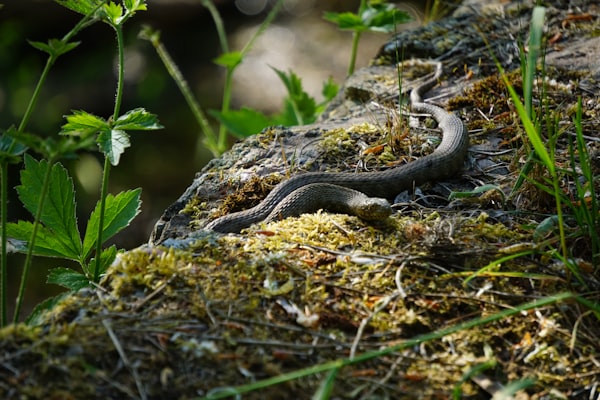How to identify Ophionyssus natricis (snake mites) and get rid of them
Ophionyssus natricis, commonly known as snake mites, are tiny arachnids that infest snakes and other reptiles.

Identifying Ophionyssus natricis

Physical characteristics
Ophionyssus natricis, commonly known as snake mites, are tiny arachnids that infest snakes and other reptiles. These parasites are difficult to spot with the naked eye due to their small size, typically measuring only 0.5 to 1 mm in length. They have a flattened body shape, allowing them to easily move through the scales of their host. Snake mites are usually dark in color, ranging from black to dark brown, which helps them blend in with the snake's skin. Despite their small size, snake mites can cause significant harm to their host if left untreated.
Behavioral signs
In addition to the physical characteristics mentioned earlier, there are several behavioral signs that can indicate the presence of Ophionyssus natricis. These signs include increased scratching and rubbing against objects, excessive grooming, restlessness, and reduced appetite. If you notice your snake displaying any of these behaviors, it is important to take action to address the issue.
Preventive measures
To ensure the health of your reptiles and prevent infestations of Ophionyssus natricis, it is important to take certain preventive measures. Here are some steps you can take:
- Regularly inspect your reptiles for any signs of mites, such as excessive scratching or visible mites on their skin.
- Maintain a clean environment for your reptiles by regularly cleaning their enclosures and removing any debris or waste.
- Quarantine new reptiles before introducing them to your existing collection to prevent the spread of mites.
- Avoid overcrowding your reptile enclosures, as this can increase the risk of mite infestations.
- Provide proper nutrition to your reptiles to keep their immune systems strong and resistant to mites.
Remember, prevention is key when it comes to dealing with Ophionyssus natricis. By following these preventive measures, you can minimize the risk of infestations and ensure the well-being of your reptiles.
Treatment options
When it comes to treating Ophionyssus natricis infestations, there are several options available. Health risks associated with snake mites make it crucial to take prompt action. Here are some effective treatment methods:
- Medication: Consult a veterinarian to determine the appropriate medication for your snake. There are various anti-parasitic medications available that can help eliminate snake mites.
- Quarantine: Isolate the infested snake to prevent the mites from spreading to other reptiles. Keep the snake in a separate enclosure with appropriate bedding and temperature.
- Cleaning: Thoroughly clean and disinfect the snake's enclosure, including all hides, branches, and other accessories. This will help remove any remaining mites and prevent reinfestation.
- Environmental control: Maintain proper humidity levels and temperature in the snake's habitat. Snake mites thrive in humid environments, so ensuring optimal conditions can help control their population.
Remember, early detection and treatment are key to effectively getting rid of Ophionyssus natricis and protecting your snake's health.
Conclusion
In conclusion, identifying and getting rid of Ophionyssus natricis, also known as snake mites, is crucial for the health and well-being of snakes. By following the steps outlined in this article, snake owners can effectively identify these pests and take appropriate measures to eliminate them. Remember to regularly inspect your snakes for any signs of infestation and consult a veterinarian if necessary. With proper care and attention, you can ensure a mite-free environment for your beloved snakes.
Frequently Asked Questions
How do I know if my snake has Ophionyssus natricis?
Some signs to look out for include excessive scratching, redness or irritation on the snake's skin, and the presence of tiny mites crawling on the snake's body.
Can snake mites be harmful to humans?
Snake mites are generally not harmful to humans. However, they can cause skin irritation if they come into contact with human skin.
How can I prevent snake mites from infesting my snake?
To prevent snake mites, it is important to regularly clean and disinfect the snake's enclosure, quarantine new snakes before introducing them to your collection, and avoid contact with snakes at pet stores, expos, or friends' homes, or other potential sources of mites.





